Emerald - Beryl
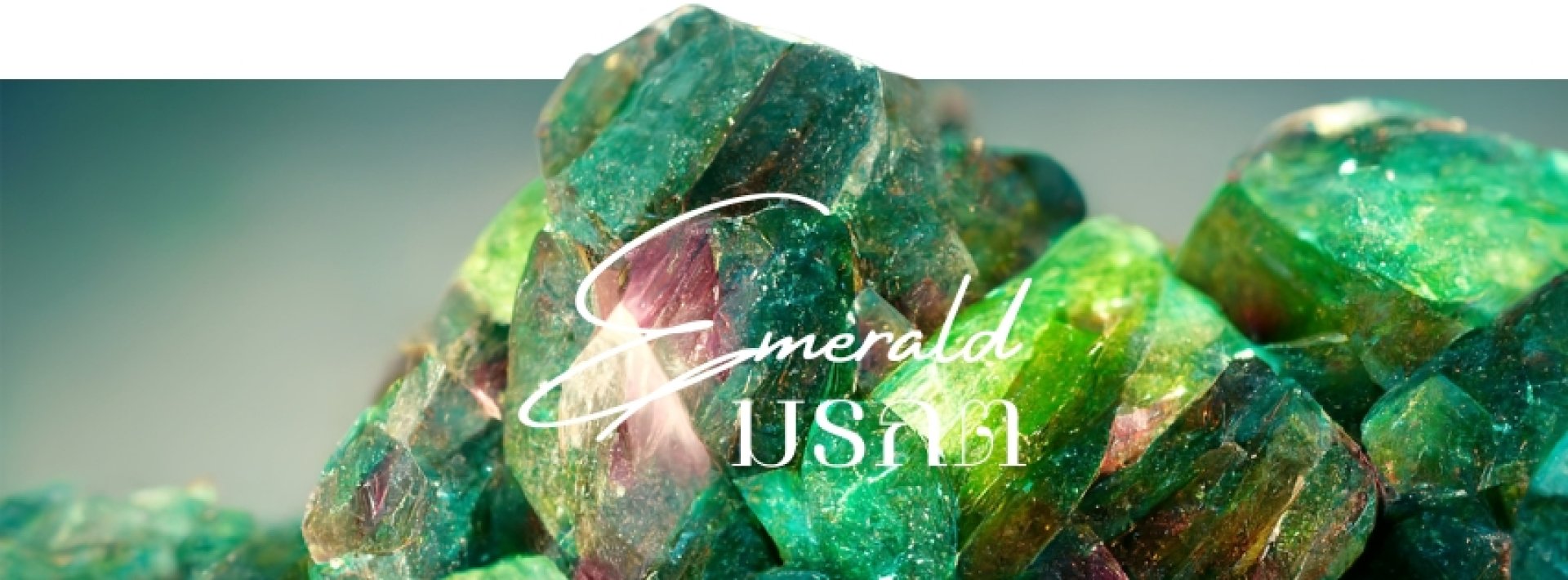
Emerald
Emerald is a strikingly beautiful transparent gemstone with a deep green hue. Known for thousands of years, the Babylonians once revered emeralds as the gemstone of the goddess Venus. It is believed to symbolize love and loyaltyso much so that fading color in an emerald was once thought to reflect fading affection.
Emeralds are among the most valuable gemstones, especially large stones over 2 carats with vivid green color and high clarity. Today, however, many other green gemstones are mistakenly referred to as "emeralds," such as "Moon Emerald," "African Emerald," or "Indian Emerald." Despite these misnomers, true emeralds have unique characteristics that clearly distinguish them from other green stones.
Mineral Family
Emerald belongs to the beryl mineral family (Beryl) and has the chemical formula BeAlSiO. Emeralds typically form as hexagonal prismatic crystals with flat terminations, crystallizing in the hexagonal crystal system.
หกเหลี่ยม (Hexagonal system)
Sources of Emerald
The most important source of emeralds is Colombia, which is renowned worldwide for producing the highest quality emeralds. Colombian emeralds are known for their vivid, deep green color, which is typically richer than emeralds from other locations. Experienced gemologists can distinguish Colombian emeralds from those of other origins based solely on their tone and intensity of color. Colombian emeralds often contain pyrite mineral inclusions.
Other notable sources include Brazil and Zambia, which produce large emeralds but generally of lower quality compared to Colombian stones. Additionally, emeralds are found in Russia and Afghanistan. Emeralds from Sandawana, Zimbabwe, are known for their beautiful vivid dark green color, but they are often smaller in size and contain more inclusions than Colombian emeralds. These inclusions usually appear as needle-like crystals of tremolite, which can make the stone look somewhat cloudy.
General Properties
- Hardness: 6.5 to 7.5 on the Mohs scale
- Refractive Index: 1.56 to 1.60
- Specific Gravity: 2.7
Distinctive Characteristics
The green color of emeralds is caused by the presence of chromium (Cr), the same element responsible for the red color in rubies. Natural emeralds almost always contain inclusions or imperfections, and truly clean, transparent emeralds are very rare. Common mineral inclusions found in emeralds include pyrite crystals, which appear as cubic shapes and reflect light with a brassy golden shine when illuminated.
Another unique type of inclusion characteristic of emeralds is the "three-phase inclusion." These consist of gas bubbles of various shapes, mineral crystals, and liquids coexisting inside the stone as three distinct phases of inclusion.
Emeralds often have many fractures, which results in smaller sizes after cutting. Therefore, emeralds that are cut to over 4 carats are considered large, rare, and very valuable. If an emerald is completely clear without any inclusions, it should be treated with suspicion, as it may be synthetic.
For natural emerald crystals, look for fine, parallel growth lines running lengthwise. Stones with a light or pale green color are not classified as emeralds but are instead called (Green beryl) gemstones.
Popular Cutting Shapes
Emeralds are among the most difficult gemstones to cut due to their numerous fractures, requiring careful cutting to avoid worsening these cracks. The most popular cut for emeralds follows the natural crystal shape and is known as the Emerald cut. This cut features a rectangular or square face with stepped facets on the pavilion (bottom).
For emeralds with relatively cloudy or included material, the cabochon cut is preferred. There is also a special type called Trapiche emerald, characterized by six dark to black spokes radiating from the center. These spokes are caused by inclusions of other minerals following the crystals structural axis. Trapiche emeralds are considered lower quality but have a unique appearance. They are often cut as cabochons to highlight their distinctive star-like pattern.
Popularity in the Gemstone World
Emerald is the most valuable gemstone among green-colored gems. Its market value depends on factors such as carat weight, color intensity, and clarity. High-quality emeralds, especially those of larger sizes, can command per-carat prices comparable to diamonds. This high value may be one of the reasons why the name "emerald" is often misused to refer to other green stones, leading to misunderstandings.
For example, "Chanthaburi Emerald" refers to green gemstones from Chanthaburi Province in Thailand, "Indian Emerald" is actually green-dyed quartz, and "African Emerald" is green fluorite from Namibia, which is a much softer material. None of these are true emeralds, but the use of the name can cause confusion in the market.
Beliefs and Symbolism
Emerald is the birthstone for May. It is believed to enhance the wearer's self-confidence and symbolizes love and loyalty. Additionally, it is thought to help protect and soothe the eyes.
Care and Maintenance
Avoid impacts and dropping, as emeralds often contain internal fractures that make them fragile. Do not clean with chemicals, avoid exposure to heat, and never use ultrasonic cleaners.
Quality Enhancement and Treatment
Because emeralds typically have numerous fractures, they are often treated by filling the cracks with oil or colorless substances that have a refractive index similar to that of emeralds. This process makes the fractures less visible. However, over time, the filling material may deteriorate and turn yellow, requiring cleaning and re-treatmentwhich carries a risk of additional cracking.
When buying an emerald, it is important to know the extent of its treatment. One method of inspection is to examine the stone under ultraviolet (UV) light. Most filling substances fluoresce a faint yellow under UV light. Emeralds that have undergone heavy treatment may even begin to "sweat" or ooze the filler material from their fractures when exposed to heat or strong lighting for extended periods.
Emerald Synthesis
Emerald synthesis has been developed for a long time, mainly to provide an alternative to natural emeralds, which are rare and expensive, as well as for use in laser technology. The process of synthesizing emeralds is quite complex and costly, making synthetic emeralds relatively expensive compared to other types of synthetic gemstones.
High-quality synthetic emeralds can be extremely clearsometimes so flawless that no inclusions are visible to the naked eye or even under 10x magnification. This level of clarity is referred to as "eye clean."
There are three main methods used to synthesize emeralds:
- Flux Growth Method
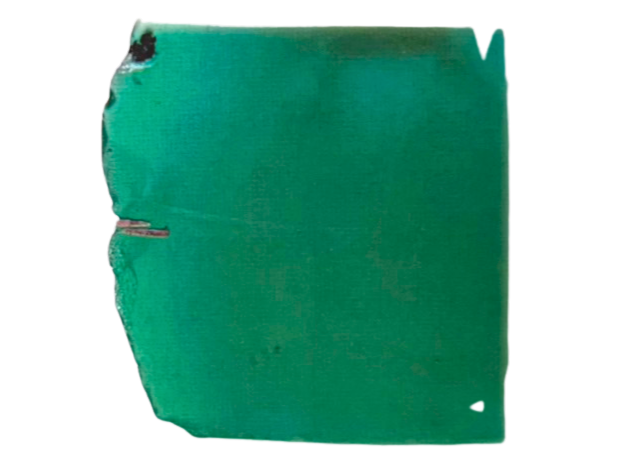
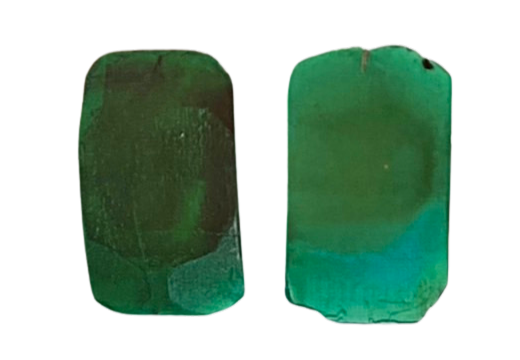
Synthetic emerald crystal
Emerald Synthesis Methods and Companies
There are three main methods used to synthesize emeralds:
- Flux Growth Method
Companies known for producing emeralds using this method include Chatham, Gilson, Inamori, and Zerfass. - Hydrothermal Growth Method
Emeralds synthesized using this method were originally produced by Linde, a company that later transferred its operations to Regency and Biron. - Overgrowth on Natural Beryl Seed Crystals
This method is used by Lechleitner. In this process, natural beryl crystals are first cut and polished into the desired shape, then immersed in a solution where synthetic emerald layers grow thinly over the faceted surfaces. These Lechleitner emeralds are usually not recut, as the surface is already smooth. Further cutting could remove the thin emerald overgrowth layer.
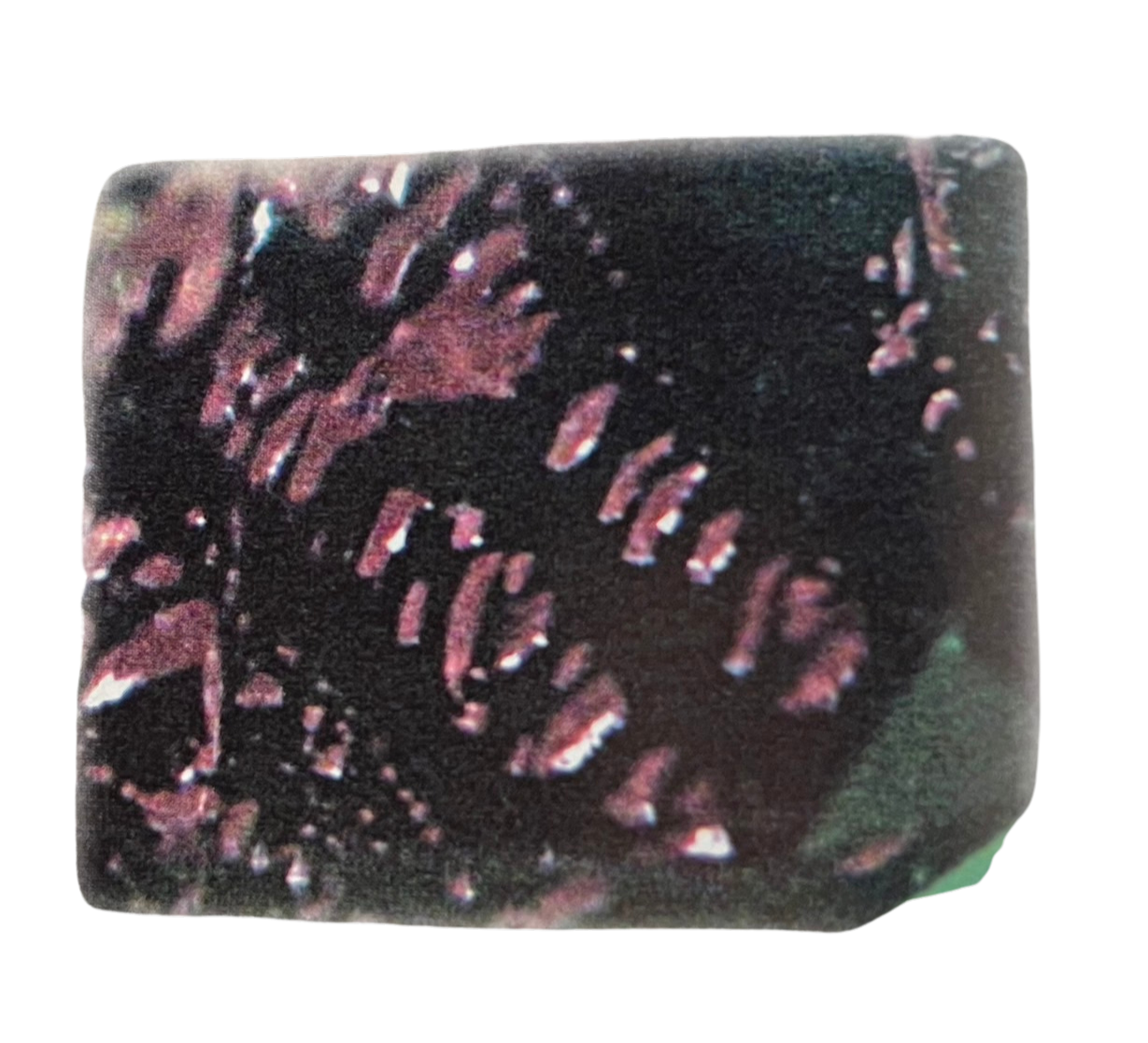
The inclusions in synthetic emeralds produced by the flux-growth method.
Comparable Gemstones
There are several green gemstones that resemble emeralds, such as tsavorite, a deep green garnet; green sapphire (also called green star sapphire); chrysoberyl; peridot; and even green glass.
The easiest way to distinguish natural and synthetic emeralds from imitations is by using a 10x magnifying lens to examine the stones interior. If air bubbles are visible, it indicates the stone is glass. Another method is using a Chelsea filter, which is a green-colored light filter. When looking at an emerald through a Chelsea filter, the stone appears red or pink because the filter absorbs green light caused by chromium the element responsible for emeralds green color. Other green gemstones do not change color and will appear green through the Chelsea filter.
Examination
Distinguishing between natural and synthetic emeralds is quite complex and requires an experienced examiner. Generally, natural and synthetic emeraldsespecially those synthesized by the flux methodlook very similar. Most distinctions come from examining inclusions or internal flaws. If the inclusions include metallic fragments, two-phase inclusions, or tiny parallel fractures, it usually indicates a synthetic emerald.
For emeralds produced by the Lechleitner method, there are almost no visible inclusions or flaws, but growth patterns on the crystal surface of the stone can sometimes be observed. This is because Lechleitner synthetic emeralds are often uncut. However, if in the future Lechleitner manages to grow thicker emerald layers, cutting might become possible.
Another way to differentiate synthetic from natural emeralds is by using long-wave ultraviolet light (at 366 nanometers) and observing the fluorescence. Synthetic emeralds tend to show a distinct dull red fluorescenceeven if faint. Therefore, testing should be done in a dark room with the emerald placed on a black background. However, emeralds synthesized by the Brion company do not exhibit any fluorescence.
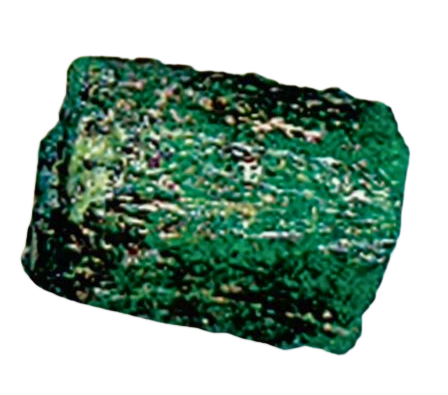
Natural emerald crystals
Sometimes, natural emeralds with very deep green color exhibit a dull pinkish-purple fluorescence. Another method, which applies only to unmounted emeralds, is measuring their specific gravity. Synthetic emeralds are slightly lighter than natural ones. The specific gravity of synthetic emeralds ranges from 2.65 to 2.66, while natural emeralds have a specific gravity around 2.71.
To test this, a solution with a specific gravity of 2.67 is used. When the emerald is dipped into this solution, synthetic emeralds will float, whereas natural emeralds will slowly sink. However, if a natural emerald has many fractures, it may float alongside synthetic ones. Conversely, if a synthetic emerald contains many inclusions, it may slowly sink, similar to natural emeralds.
To distinguish emeralds from other imitations quickly and easily, the Chelsea filter is commonly used. When viewed through the Chelsea filter, emeralds appear pink to red in color.
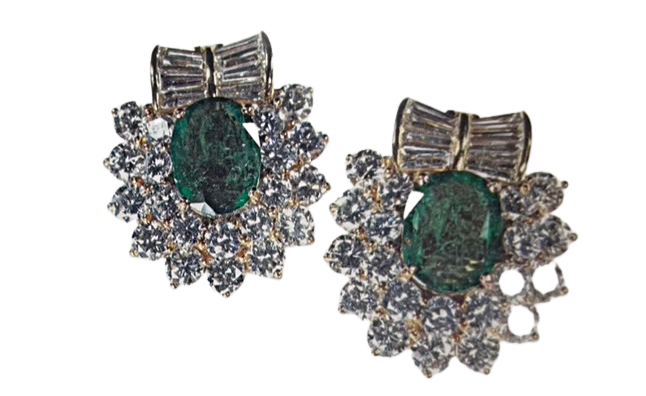
Other Beryl Family Gemstones
The beryl family includes a variety of colors, each known by different names depending on the common shades found in the gem market:
- Aquamarine: Sea blue, light blue
- Morganite: Pink, pinkish-purple
- Bixbite: Deep red
- Heliodor: Golden yellow to yellow-green
- Red Beryl: Pinkish-red to ruby red
- Goshenite: Colorless to pale yellow or light brown
- Maxixe: Deep blue
Beryl gemstones are found in many locations worldwide, including Colombia, Brazil, Russia, Sri Lanka, Namibia, Afghanistan, and Pakistan. The highest quality aquamarine today comes from Brazil, where large, clear crystals are found. The blue color of aquamarine is due to iron impurities within its structure, and it is often heat-treated to enhance the color intensity.
Aquamarine resembles blue topaz, but generally commands a higher price. Other notable sources of aquamarine include Afghanistan and the United States. A rare type of beryl is red beryl, which is found in Utah.
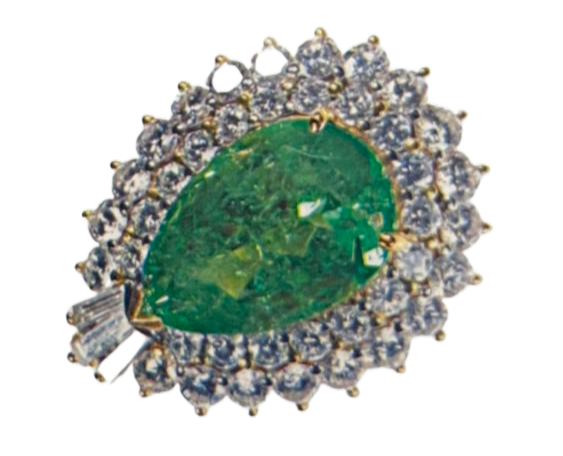
Deep blue beryl is found exclusively in Brazil, while red beryl occurs only in the United States. Both of these rare beryl varieties are typically small in sizeafter cutting, most weigh less than one caratbut they are significantly more valuable than other types of beryl.
The least expensive beryl is the colorless or pale variety known as goshenite. Some goshenite stones are irradiated to deepen their color, making them resemble the golden-yellow hue of heliodor. However, only goshenite from certain sources responds to this treatment.
Currently, there are no synthetic beryls available on the market, likely because their relatively low market value does not justify the cost of production.
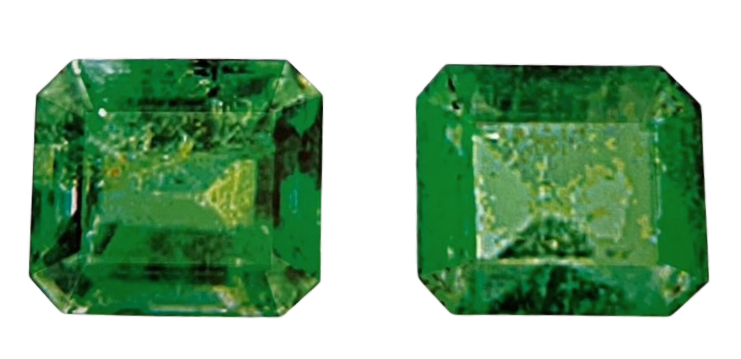
Emerald cut


